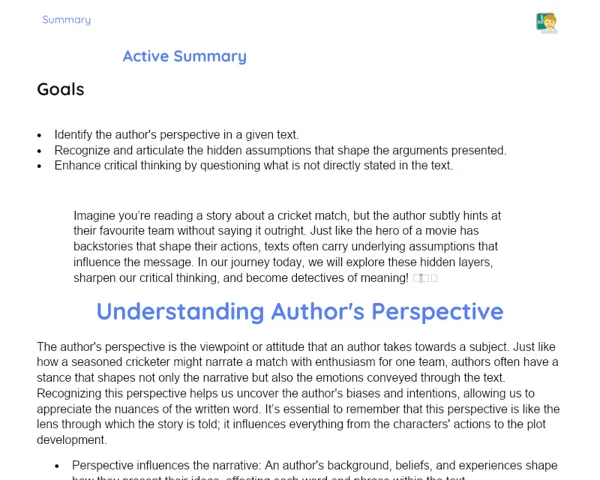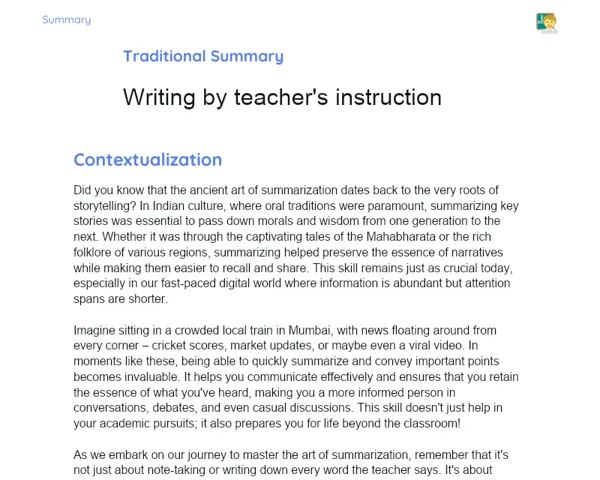Summary Tradisional | Object Pronouns
Contextualization
In English, object pronouns are words that replace nouns that receive the action of a verb in a sentence. They play a significant role in making our communication smoother and avoiding repetitive mentions. Instead of saying someone's name repeatedly or naming an object multiple times, we use pronouns like 'him', 'her', 'it', 'us', and 'them'. For instance, instead of saying 'Maria called John and Anna', we could simply say 'Maria called them'.
Similar to languages like Portuguese, object pronouns are vital for crafting clear and concise sentences. You’ll notice they pop up in conversations, songs, and films, highlighting their significance for understanding and producing English texts. Knowing how and when to use these pronouns is an important skill that enhances both our writing and speaking, allowing for more dynamic expression without unnecessary repetition.
To Remember!
Definition of Object Pronouns
Object pronouns are the words we use to replace nouns that receive the action of a verb in a sentence. They help in avoiding the tedious repetition of names or nouns, thus making communication clearer and more efficient. The object pronouns in English include 'me', 'you', 'him', 'her', 'it', 'us', and 'them'. For example, in the sentence 'I saw John', we can use 'him' instead of 'John', making it 'I saw him'.
Object pronouns are distinct from subject pronouns, which are the ones performing the action. Subject pronouns include 'I', 'you', 'he', 'she', 'it', 'we', and 'they'. To clarify, in 'He loves her', 'he' is the subject pronoun and 'her' is the object pronoun.
Grasping the role of object pronouns is essential for forming correct and natural sentences in English. This knowledge is particularly vital in both spoken and written communication, where clarity and coherence are crucial for effective interaction.
-
Object pronouns replace nouns that receive the action of the verb.
-
Object pronouns include: 'me', 'you', 'him', 'her', 'it', 'us', 'them'.
-
They differ from subject pronouns which perform the action of the verb.
Use in Sentences
Object pronouns are used in sentences to replace nouns that would otherwise be stated again, which helps in making the sentence flow better and reduces redundancy. For example, instead of saying 'Maria saw John and talked to John', we can simply say 'Maria saw John and talked to him', where 'him' effectively takes the place of 'John' in the latter part.
You can place object pronouns in various parts of a sentence based on its grammatical structure—they can follow verbs, prepositions, or even sit at the end. For example: 'I gave him the book', 'She is talking to him', and 'They invited us'.
Practicing the use of object pronouns in different sentence types can significantly enhance a student's fluency and accuracy. This can be achieved through activities that encourage students to swap nouns with object pronouns, which will help them internalize this grammatical rule.
-
Object pronouns avoid the repetition of nouns.
-
They can follow verbs, prepositions, or be placed at the end of a sentence.
-
Regular practice is key to achieving fluency in their usage.
Difference Between Subject and Object Pronouns
A fundamental aspect of English grammar is differentiating between subject and object pronouns. Subject pronouns are used when the pronoun carries out the action of the verb. Examples include 'I', 'you', 'he', 'she', 'it', 'we', and 'they'. For instance, in 'She loves him', 'she' is the subject pronoun performing the loving.
On the other hand, object pronouns receive the action of the verb and replace nouns in the object position of a sentence. For example, in 'She loves him', 'him' is the object pronoun that receives the action of 'loving'. It’s crucial to avoid mixing them up to steer clear of grammatical mistakes.
Consistent practice through exercises requiring the substitution of subject and object pronouns is an effective method to master this differentiation. Understanding this contrast facilitates more precise and accurate communication.
-
Subject pronouns perform the action of the verb.
-
Object pronouns receive the action of the verb.
-
Practical exercises help reinforce the difference between the two.
Everyday Examples
Object pronouns are frequently encountered in daily situations, from conversations to songs and movies. They make language sound more natural and fluid. For instance, in the song 'Let It Go' from Frozen, the pronoun 'it' replaces something previously mentioned, thus avoiding repetition.
In movies and various series, object pronouns enhance the realism and fluidity of dialogues. Phrases like 'I can't see him' or 'She gave it to me' showcase how these pronouns assist in clear communication.
Incorporating examples of object pronouns into listening exercises and conversational practices is a fantastic method to help students recognize and use these pronouns effortlessly. This could involve listening to music, watching films, identifying the object pronouns in use, and crafting their own sentences featuring these pronouns.
-
Object pronouns are common in dialogues, songs, and movies.
-
They contribute to making language more natural and fluent.
-
Listening activities and conversation practice support internalization.
Guided Practice
Guided practice is a vital step in mastering object pronouns. It encompasses practical exercises whereby students replace nouns with object pronouns in given sentences. This hands-on experience solidifies theoretical concepts and applies grammatical rules in real-life contexts.
Exercises may involve completing sentences, transforming phrases by substituting nouns with object pronouns, and spotting object pronouns within texts. For example, changing 'Maria called John and Anna' to 'Maria called them'. An additional task could be to complete 'The teacher gave the books to ___' with 'us', where the right option is 'us'.
Guided practice should be overseen by teachers to ensure students are accurately applying what they've learned. Instant feedback is crucial for correcting mistakes and reinforcing their learning. Continuous and guided practice results in fluency and confidence in using object pronouns.
-
Consists of practical exercises replacing nouns with object pronouns.
-
Includes sentence completion and transformation tasks.
-
Monitoring and feedback are critical for errors correction and learning.
Key Terms
-
Object Pronouns: Words that substitute nouns receiving the action of the verb.
-
Subject Pronouns: Words that carry out the action of the verb.
-
Fluency: The quality of language that is smooth and free from unnecessary repetitions.
-
Guided Practice: Practical exercises overseen by the teacher for applying learned concepts.
Important Conclusions
In this lesson, we delved into the significance of object pronouns in English, which serve to replace nouns that receive the action of a verb. We highlighted the distinction between object and subject pronouns, which perform the action of the verb. We saw how these pronouns are essential for facilitating smoother and less repetitive communication. Practical examples illustrated their everyday use in songs, films, and common conversations.
We reflected on how object pronouns can follow verbs, prepositions, or be positioned at the end of sentences. Engaging in guided practice through exercises that substitute nouns with object pronouns has been crucial for cementing theoretical knowledge, allowing students to apply grammatical rules in relevant situations. Immediate feedback has proven essential for correcting any mistakes and reinforcing understanding.
Being able to comprehend and utilize object pronouns plays a critical role in achieving effective and natural communication in English. They are commonly used across various forms of media and daily interactions, helping mitigate redundancy and ensuring that language remains vibrant and engaging. We encourage students to keep exploring this topic to further refine their writing and speaking skills.
Study Tips
-
Review the examples of object pronouns we discussed in class and practice replacing nouns with object pronouns in the sentences that you create.
-
Watch English films and listen to music, paying close attention to how object pronouns are used. Try to spot and note down these pronouns while you engage with the content.
-
Engage in additional grammar exercises focused on object pronouns, which can be found in various grammar books or online resources, to reinforce what you've learned in class.



